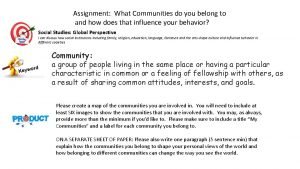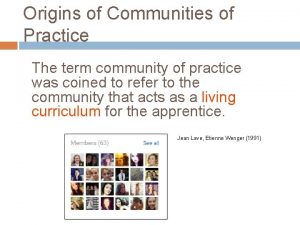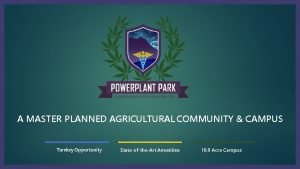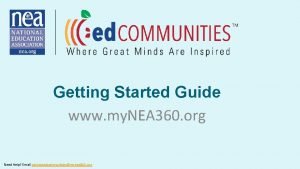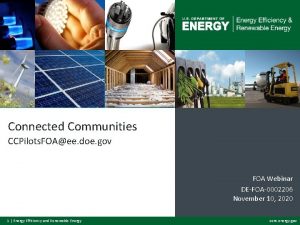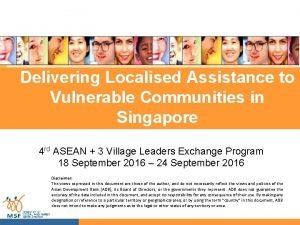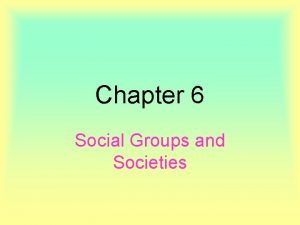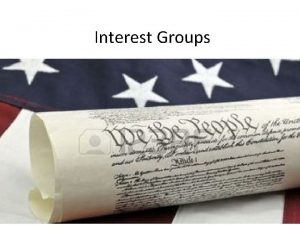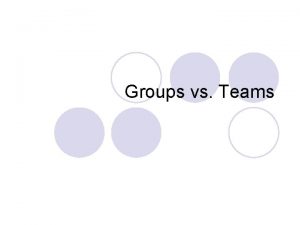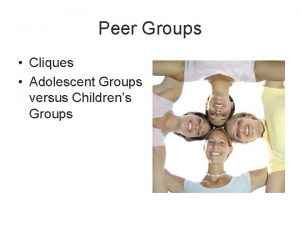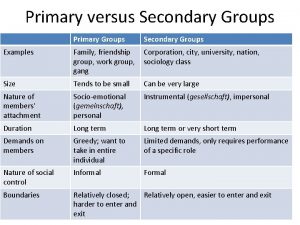Communities of Practice Communities of practice are groups













- Slides: 13

Communities of Practice “Communities of practice are groups of people who share a concern or a passion for something they do…. . and learn how to do it better as they interact regularly. ” Etienne Wenger “It’s not about working harder, it ‘s about working smarter. ”

Communities of Practice Community Members: • engage in joint activities and discussions • help each other • share information • build relationships that enable them to learn from each other. • develop a shared repertoire of resources: experiences, stories, tools, ways of addressing recurring problems— in short a shared practice

Communities of Practice • enable practitioners to take collective responsibility for managing the knowledge they need • create a direct link between learning and performance, because the same people participate in communities of practice that are in the field trying to meet the needs of the community they serve • are not limited by formal structures: they create connections among people across organizational and geographic boundaries.

What Do Communities of Practice Look Like? Problem solving “Can we brainstorm some ideas on how to better serve our growing population of kids with ASD? . ” Requests for information “How many students with ASD are identified in your programs? ” Seeking experience Reusing assets Coordination and synergy ‘Has anyone dealt with a child with these behaviors? ” “I have a behavior plan I wrote for a student last year. I can send it to you and you can easily tweak it for this child. ” “Can we combine our programs to serve more students? ” Discussing developments “How have you used the Positive Behavior Support system? Does it really help? ” Documentation projects “We have faced this issue five times now. Let us write it down once and for all. ” Visits “Can we come and see your after-school program? We need to establish one in our city. ” Mapping knowledge &Identifying gaps “Who knows what, and what are we missing? What other groups should we connect with? ”

Putting Communities of Practice in Autism (Co. PA) into Place! Where do we go from here?

Communities of Practice in Autism (Co. PA) A collaborative grant funded by: – DMHMRSAS – The integrated Training Collaborative – The VA Department of Education, Special Education Instructional Services

Purpose • To share knowledge, information and resources to help providers improve services for infants and toddlers and young children with ASD and their families in natural environments Key outcomes: – Share resources – Improve supports and services • Develop a means to communicate individualized service delivery – Enhance families’ confidence and competence – Address both providers’ and families’ skills

Mission • Sharing information about evidence-based strategies with a focus on infant/toddlers and young children in natural settings (e. g. , joint attention, behavior intervention strategies) • Guidelines for educating parents and professionals about effective strategies and using the strategies to meet IFSP/IEP goals

Issues • Lack of knowledge about what is evidence-based practices for infants/toddlers & children with ASD – – Strategies on providing services Variety of services Transition between programs Not providing/having services that families perceive as appropriate • Overlap or gaps in services to children/families • Professionals don’t always know what to do • Professionals don’t always know what to say to families

Outcomes: Year 1 • Develop local Co. PA goals based on our mission and community issues and needs • Hold 9 meetings based on the Co. PA goals PLAN September 2007 – September 2008 • Measure progress toward the mission and local Co. PA goals – Did anyone learn anything? – Did services get better? – Are we making progress? • Likert scale – Use pre/post measure to evaluate community standing (Adrienne) • Develop a sustainability plan – Train new Co. PA leaders? – Satellite Co. PAs? – Identify needs for sustainability (funding, supports)

Process When to hold meetings? – Day or evening? – Rotate? • Where you hold meetings? – Rotate location? – Central location? • How long will you meet? – World News takes 30 minutes! • Disseminating information about the meeting and in between the meetings •

Process • Who do we invite? – – – – Invite people based on how EI system is set up Family Members TTAC EI Systems Managers Part B – ECSE Head Start Programs Others (Dev. Ped, University Faculty, ASD experts, Parents Linking with University certificate ASD training programs Size of Co. PA group • Talk with system managers about structuring meetings & disseminating information • Ask key players to make a commitment to the Co. PA & 9 meetings

Process • Challenges & Solutions – Communicating between meetings • Email, snail mail, a variety of ways to meet all members’ preferences – Time & Commitment • Co. PA leader is only a facilitator • Delegate tasks – Defining evidence-based practice – How to choose topics • Brainstorm & prioritize topics – Getting people involved and committed
 Insidan region jh
Insidan region jh Plant succession
Plant succession What communities are you part of example
What communities are you part of example How are ethnic groups and religious groups related
How are ethnic groups and religious groups related Origin of communities of practice
Origin of communities of practice Practice assessor feedback examples
Practice assessor feedback examples Planned agricultural communities
Planned agricultural communities Osu living learning communities
Osu living learning communities Benedict arnold imagined communities
Benedict arnold imagined communities What are hydrothermal vent communities
What are hydrothermal vent communities Nea 360
Nea 360 Soft bottom subtidal communities
Soft bottom subtidal communities Doe connected communities
Doe connected communities Vulnerable communities in singapore
Vulnerable communities in singapore


